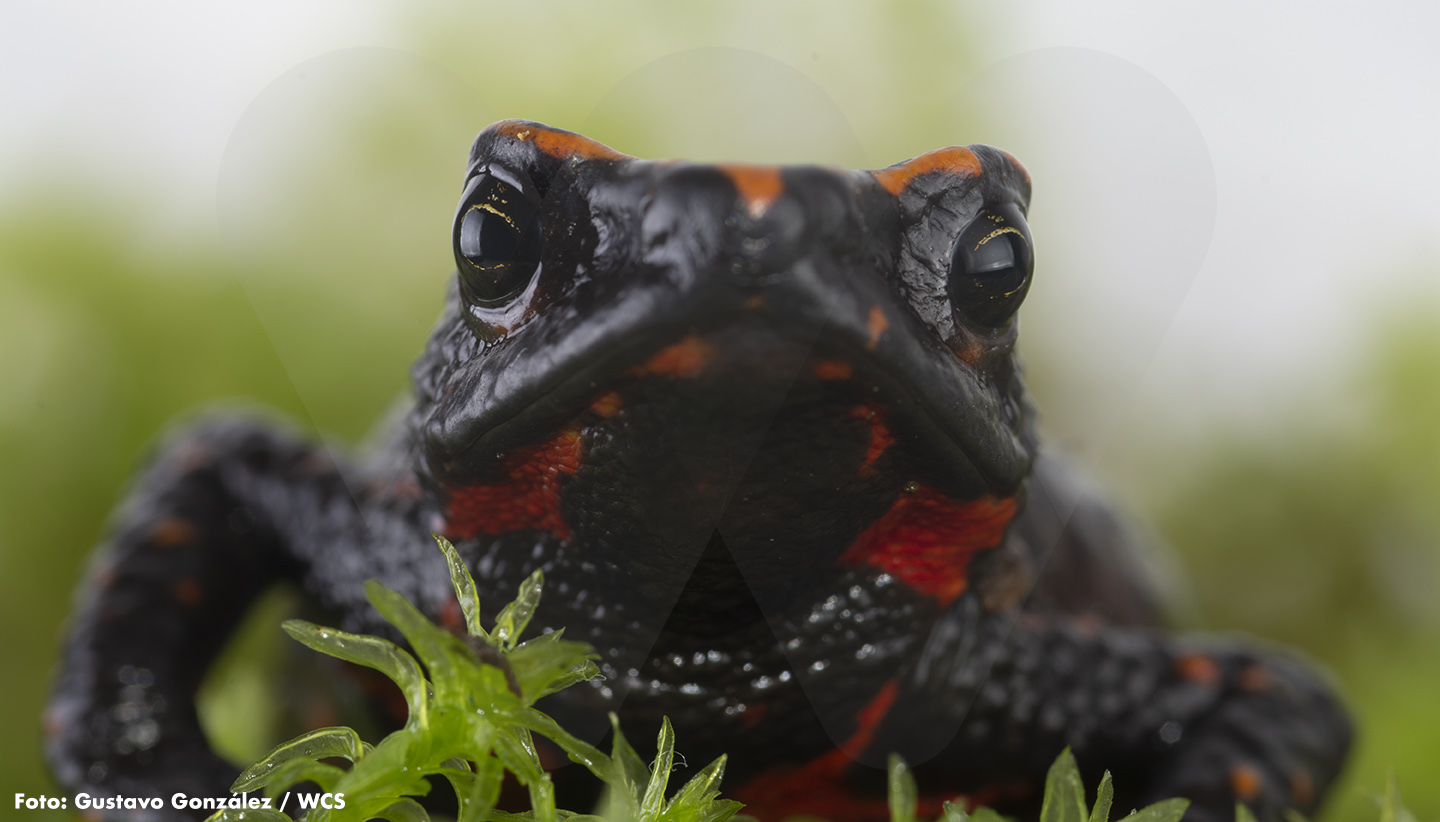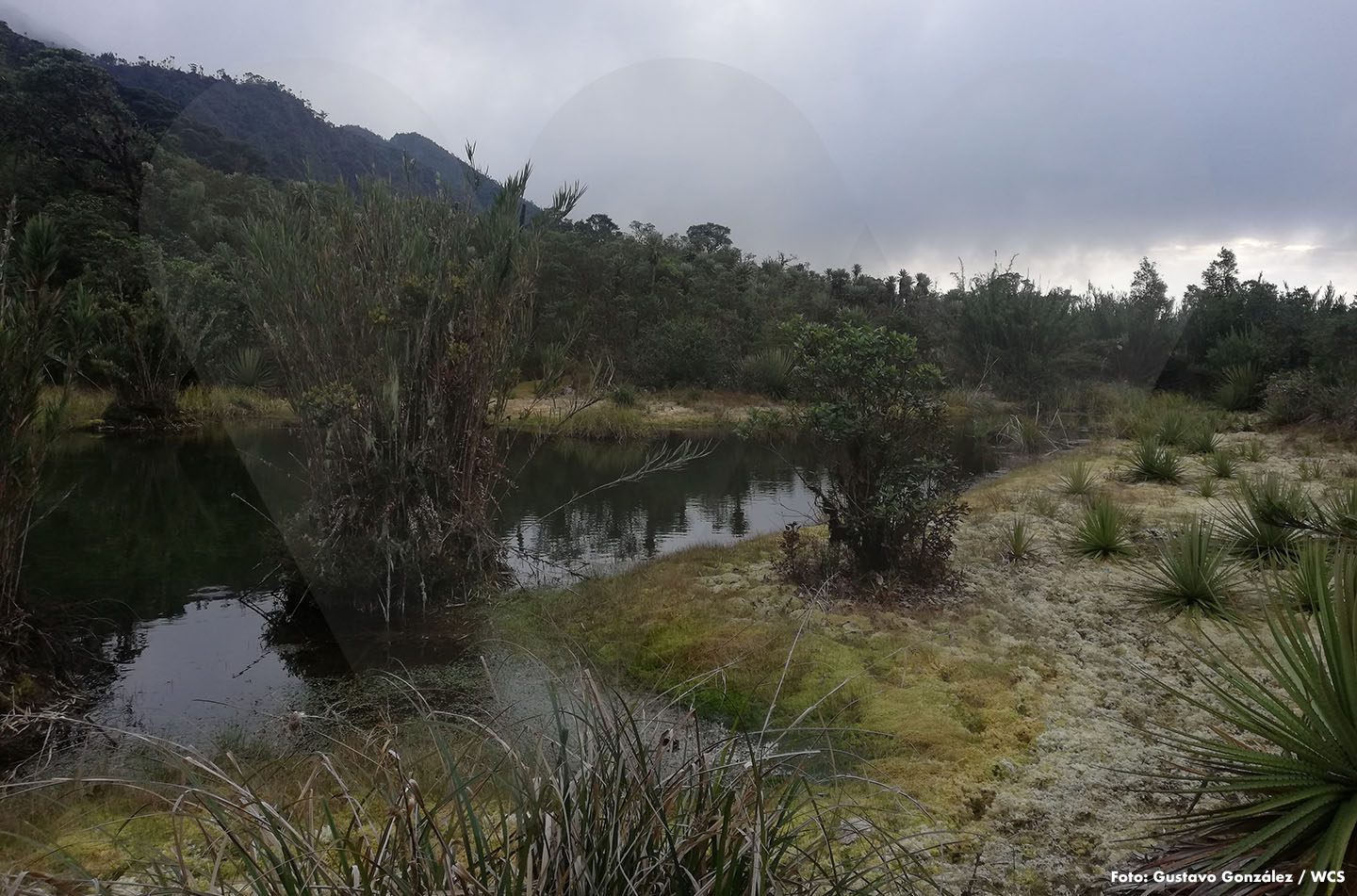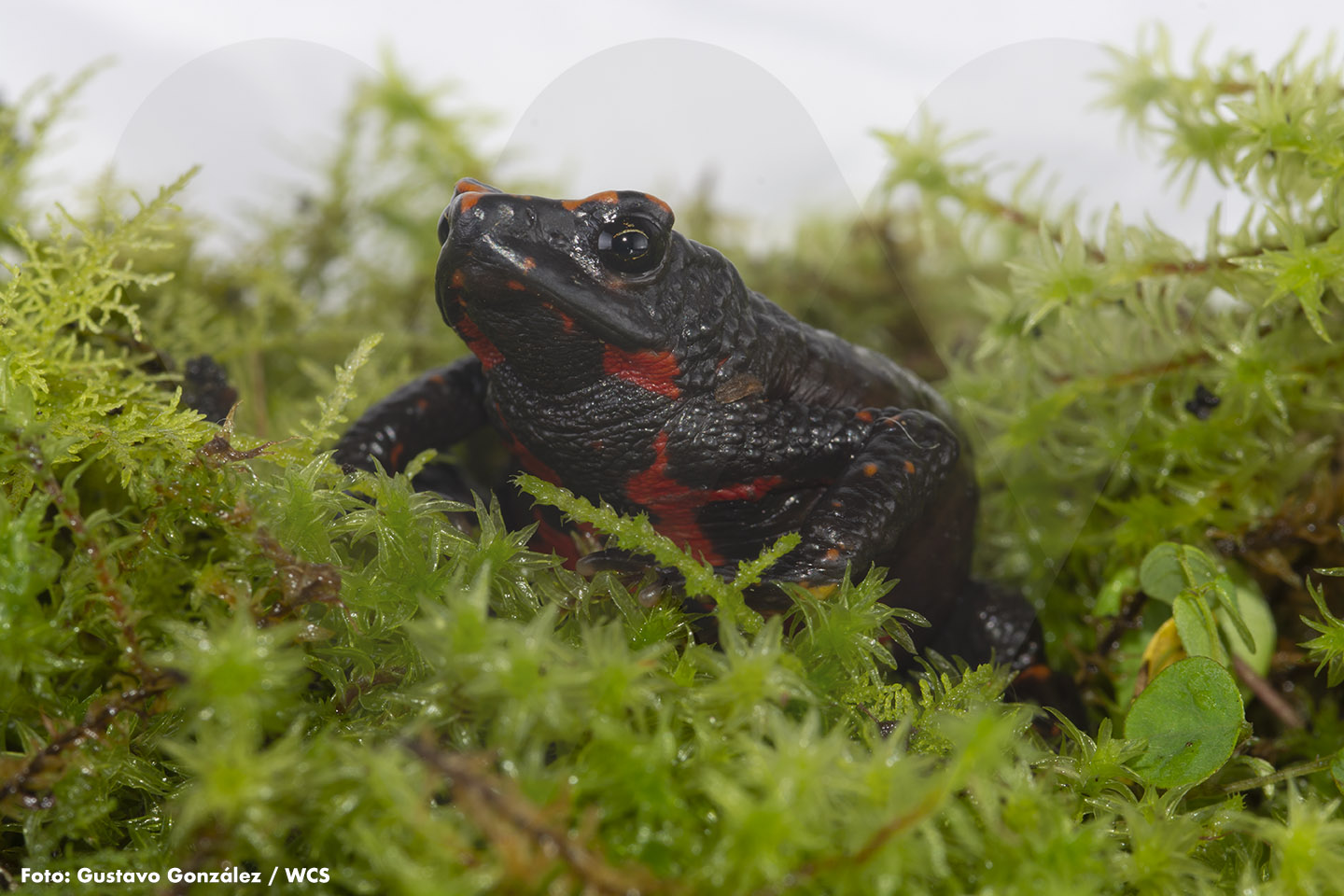Carlos Ríos, who lives in the rural settlement of Maza Fonté, dedicated his farm to the conservation of Atelopus lozanoi, an endemic species that disappeared at the beginning of the century and was rediscovered in 2016 in this buffer zone of the Chingaza National Park. Through the ‘Strategy for the Conservation of Threatened Amphibians’, WCS will support this community effort with monitoring, environmental education and productive projects.

At the end of the twentieth century, life for the frog Atelopus lozanoi was not easy. Once undisturbed in the Chingaza National Natural Park and some of its surroundings in Eastern Cundinamarca, the only place in the world it chose to live in (endemic), its presence has dwindled in the last years, relentlessly distressed by environmental damage and disease.
It shared the same fate of many other harlequin frogs (common name that groups the Atelopus). In different parts of the country and the continent, they were harassed by the alterations to their habitats, deforestation, livestock farming, and the presence of the rainbow trout (invasive species that eats their tadpoles) and the chytrid fungus, also known as Bd (Batrachochytrium dendrobatidis), that disrupts their breathing until it kills them. All this decimated them, causing a considerable decline in their populations. The loss has been so dramatic that, of the 45 known species of Atelopus frogs distributed throughout Colombia, at least 38 lost populations.
A. lozanoi, part of this unfortunate group, vanished without a trace between years 1998 and end of 2000.

There is no agreement among herpetologists and researchers on which of all these threats had the greatest impact on the fate of this frog that blends on its body a series of hues that try to replicate part of the rainbow, going from yellow to brown, with reddish and orange in between. And there is no consensus either on the reason why, on the 4th of September of 2016, after almost two decades of absence, it reappeared in the rural zone of Choachí, in the Maza settlement and on the property of Carlos Ríos, an inhabitant of the zone who, from that moment on, became its most determined protector, supported by his family. This event opened a window of hope for this genus, so unfortunate among anurans.
It all began with a nuptial embrace
When Carlos, now 65 years old, talks about this topic, he cannot help remembering his youth, when he spent days at his father’s farm at the outskirts of the Park: “A. lozanoi was as abundant as weeds. Wherever you walked, you found one.”
The Red Book of Amphibians confirms this version related with its abundance, as it explains that in the years before 1989, for example, in a walk through the fields and in a few hours, hikers could see up to 50 juveniles and 20 adult specimens.
“My father said all the time: look, there is a mother carrying her child” says Carlos. This without knowing that the male, much smaller than the female, climbs on top of her and holds her under the limbs, with the intention of mating. The authors of the Red Book also say that, at that time of splendor, in the decades of the 80s or the 90s, in one week a keen observer could find up to 10 of those pairs engaged in their ‘nuptial embrace’, as some call this crucial moment. As time went by, these populations went from their height to their absolute decline.
Photographs of a beautiful frog
Some years ago, Carlos inherited his father’s farm. He called it ‘El Paramillo’ and created the Maza-Fonté organization to offer ecotourism services on-site.
“And when we started developing the project, Merilyn Caballero-Arias, professional in research and monitoring at the Chingaza National Natural Park, aware of my interest in the fauna of the region and during the counseling process that she offered us to improve our work with the visitors, showed me some photographs of the frog and told me how important it would be to rediscover it. She had tried without success. By chance, some days later we went on a field trip led by a biologist and, on our way back, almost at night, he stayed behind to take some photographs. I warned him that it was late and that we should hurry back, but he asked me to wait for him because he had found a beautiful animal. Days later he sent me some of the images and there was the surprise: it was A. lozanoi. We then knew that it had reappeared in the zone.”

After that fortunate day in 2016, Carlos has seen it some three more times in his property and especially in a cousin’s neighboring farm, located in a lower zone, far from intervened sites or pastures and where the Andean forest is better conserved. The latest encounter was some 8 months ago.
“It is ironic but, after seeing it so many times, we now celebrate each discovery. I would like to do everything possible to protect it”, he says. And it is not a ready-made phrase. It is a reality because this man, of peasant origin and an enthusiast of natural sciences, dedicated all the hectares of his farm to conservation, not only to give the frog and its recovery a breather, but to protect the rest of fauna and flora related with this terrain, located in the buffer zone of the national protected area and at a short distance from the paramo. “We also see Andean bears or traces of them, white-tailed deer, red brockets, agoutis, coatis and other small mammals. And, of course, plants, such as orchids and frailejones (plants from the genus Espeletia). After years without livestock farming or agriculture, the farm has recovered alone, to the point that pastures have disappeared and are now covered with vegetation.”
“Carlos and his family, with the support of Parques Nacionales de Colombia, have intensified their ecotourism work, having the frog as their main incentive”, explains Merilyn Caballero-Arias, who tells us that Parques Nacionales, through the Chingaza National Park, has technically supported this effort during the last years. The program ‘Strategy for the Conservation of Threatened Amphibians of Colombia’, led by WCS Colombia with the support of the Fundación Santo Domingo and the Zurich Zoo, has now joined them to encourage all this community work that seeks to give a sustainable future to A. lozanoi, named in honor of professor Gustavo Lozano of the Universidad Nacional, who made invaluable contributions to botanical taxonomy in Colombia.
“We will defend all this process that has been in progress for years, strengthening the monitoring of this and other species, adding environmental education processes for local communities and conducting research on the chytrid fungus”, explained Gustavo González, WCS Colombia herpetologist. He added that they also seek to promote restoration, give livestock farming a twist and restrain the trout invasion, activities that do great harm to amphibians in the zone.
“We also want to make conservation agreements with the intention of implementing productive initiatives among residents, focused on tourism, a topic that is already making headway in communities neighboring the Chingaza Park” explains González. The purpose is for part of the local communities to obtain additional income and begin adjusting, little by little, some activities that can be detrimental to their surroundings.
